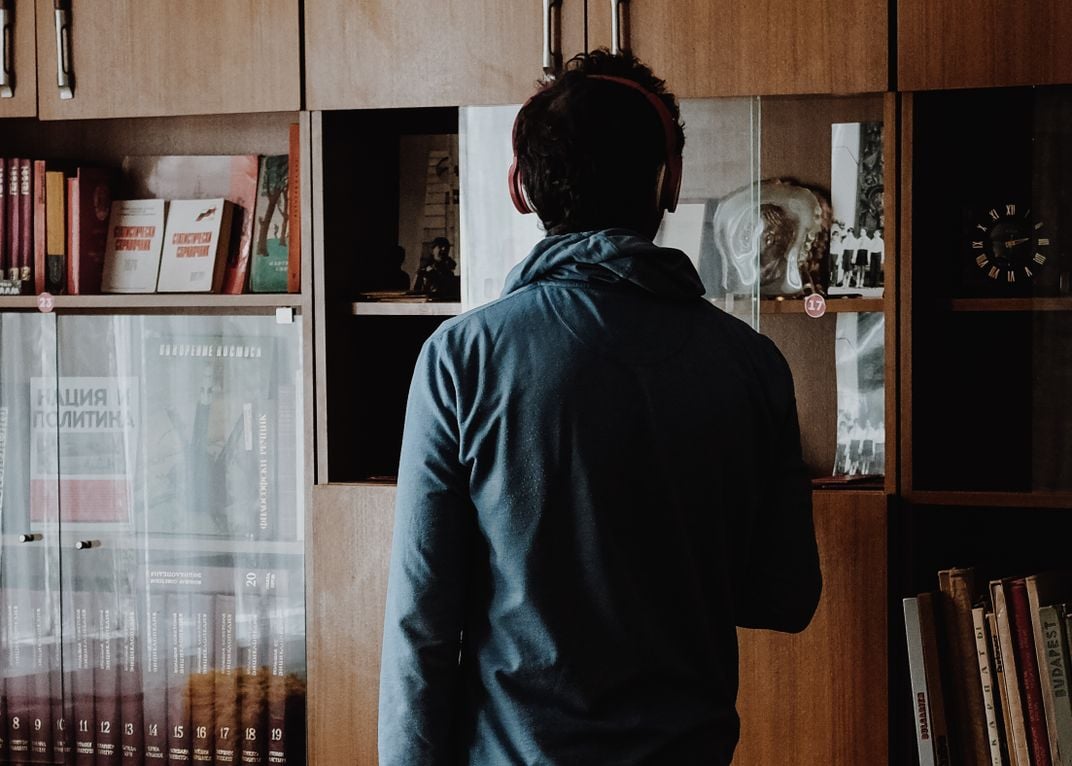Every day, numerous individuals visit the modest one-bedroom apartment of the Petrov family in downtown Sofia, Bulgaria, to embark on a journey back in time to the 1980s. Equipped with headsets, they quietly explore the space—browsing through books, sifting through drawers, experimenting with clothing, and even sniffing jars of food in the pantry.
Known as The Red Flat, this immersive experience includes an audio guide that animates the lives of the apartment’s fictional residents: Elena Petrov, a journalist; her husband, Plamen, who works overseas; and their teenage son, Boyan. Visitors discover that Boyan enjoys making random prank phone calls using the family’s rotary phone, while Plamen keeps a bottle of Johnnie Walker whisky, a rare find in Bulgaria during the ‘80s, in the liquor cabinet for special occasions.
Founded in 2019 by Valeri Gyurov, an architect and art collector based in Sofia, in collaboration with [ ]356 Association, a Bulgarian nonprofit specializing in urban walking tours, The Red Flat offers a unique glimpse into Bulgarian life under communism. Gyurov emphasizes the importance of providing an insider’s perspective on this era, considering the slow transition to democracy and the enduring impact of the previous regime on contemporary society.
]356 Association, a Bulgarian nonprofit specializing in urban walking tours, The Red Flat offers a unique glimpse into Bulgarian life under communism. Gyurov emphasizes the importance of providing an insider’s perspective on this era, considering the slow transition to democracy and the enduring impact of the previous regime on contemporary society.
As visitors immerse themselves in the daily routines of a typical Bulgarian family from the 1980s, the audio narration weaves historical context, bridging the gap between past and present. The Red Flat aims to break down the traditional barrier between observer and exhibit, encouraging visitors not only to interact with the apartment’s artifacts but to engage with them actively. Whether flipping through vintage books on the Bulgarian workers’ movement or handling a pioneer’s red scarf from the communist youth organization, visitors are invited to touch and experience everything firsthand.
Driven by a growing interest, independent museums focusing on various aspects of life during communism are emerging across Central and Eastern Europe. These interactive museums cater to both tourists and locals, offering a time-travel experience that sheds light on an era that significantly shaped entire generations. While each project is unique, they collectively reflect the complex legacy of communism, transcending geographical boundaries.
Life behind the Iron Curtain followed a predictable pattern that limited individual autonomy. Communist regimes dictated various aspects of daily life, from childhood involvement in state-sponsored youth organizations to government-assigned jobs and housing. With a controlled economy and restricted access to foreign media, many people navigated a constrained existence with limited exposure to alternative lifestyles. Despite some dissent and longing for external freedoms, most individuals adapted to the system’s confines.
The dissolution of communist regimes in Central and Eastern Europe over three decades ago ushered in a period of tumultuous social and political change. The aftermath of this transition continues to spark debates and reflections on the diverse experiences of individuals during the communist era. Historians estimate that at least 65 million people worldwide lived under communist rule, with each country grappling with its unique challenges and legacies.
While some advocate for a comprehensive portrayal of communism, including its darker aspects, others believe that museums focusing on everyday life provide valuable insights and contribute to a nuanced understanding of this historical period. By combining humor, nostalgia, and interactive elements, these museums offer visitors an educational and emotional journey through a bygone era, fostering a deeper connection to the past.
